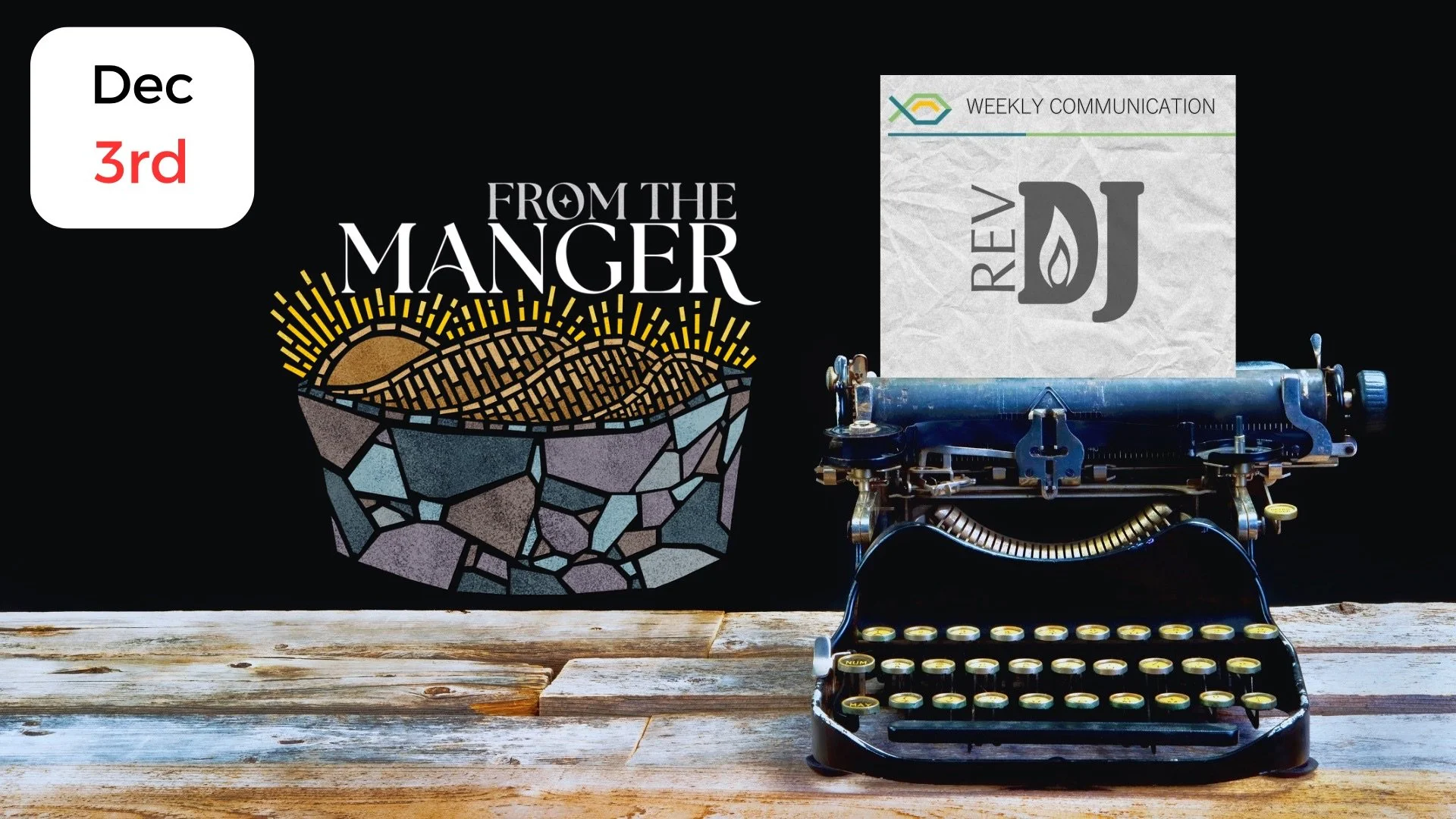Dear Federal Way UMC friends,
Grace and peace to you as we continue our Advent journey together.
Advent has officially begun, and what a beautiful start we’ve had. If you missed last Sunday’s service or would like to revisit it, you can always watch it on our YouTube page. Watch last Sunday’s sermon on YouTube here. (Feel free to share it with anyone who may be blessed by it.)
Last weekend many of you picked up our Advent devotionals from Illustrated Ministry—so many, in fact, that we are printing more! Additional copies will be available this Sunday, along with Advent calendars for households of all ages.
A Word of Thanks to Our Sunday School Volunteers
I want to offer a heartfelt thank you to every person who is volunteering in our Children’s Sunday School ministry. Your willingness to teach, welcome students, and create a safe, joyful learning environment is a true gift to our church.
We now have curriculum selected and prepared through the end of April 2026, and our Office Administrator, Marissa, will print and assemble lessons three weeks in advance so volunteers can review materials early, gather supplies, and feel well-prepared. Your ministry shapes the faith of our students in lasting and meaningful ways—thank you for saying yes.
Longest Night Service – Saturday, December 21 at 4:00pm
On December 21—the winter solstice and the longest night of the year—we will gather for a reflective service specifically crafted for those who carry grief, stress, or complicated emotions during the holidays.
This gentle liturgy offers quiet, music, prayer, and the assurance that God meets us in the places where shadows feel longest.
If you or someone you love needs a calm, healing space this season, please join us.
Sabbatical Update (January 12 – April 5)
Thanks to the support of our Church Board, I will be taking a sabbatical beginning after worship on January 12 and returning to worship on Easter Sunday, April 5. United Methodist pastors are encouraged by the Book of Discipline to take time for renewal every seven years of full-time ministry. I am feeling well, and this time will be used for rest, reflection, and renewal.
Pastor Caleb Cortés will serve as Pastor-in-Charge during this period, preaching for about two-thirds of the Sundays while I am away. Our tradition of strong lay worship leadership continues, and a team of retired pastors and lay volunteers will help support pastoral care needs as they arise.
Below is the full FAQ for those who would like more detail.
Sabbatical FAQ
Why is Pastor DJ taking a sabbatical?
According to the United Methodist Book of Discipline, clergy who have served seven years of full-time ministry are encouraged to take sabbatical leave for rest, spiritual renewal, continued learning, and reflection. This is a normal and healthy rhythm in Methodist life.
How long will the sabbatical be?
January 12 (after worship) through April 5. Pastor DJ will return to worship on Easter Sunday.
Is Pastor DJ okay?
Yes. I am feeling healthy and grateful. This is not medical leave. This time is for rest and reflection after several full years of ministry, including our church’s major outreach efforts, facility upgrades, ongoing community partnerships, and the long journey through illness and recovery.
Who will lead the church while Pastor DJ is away?
Pastor Caleb Cortés will serve as Pastor-in-Charge.
He will preach for roughly two-thirds of the Sundays and coordinate worship with our staff and volunteers.
Who will preach the remaining Sundays?
Guest preachers from our conference and trusted clergy colleagues will join us.
What about pastoral care?
A combination of our dedicated laity and several retired pastors will be available for pastoral care needs.
Will church ministries continue?
Yes. All ongoing ministries will continue as scheduled, including Abundant Grace, Sunday School, community partnerships, and seasonal activities.
How can we support the sabbatical?
Pray for renewal, for our staff and volunteers, and for Pastor Caleb as he leads the congregation. Continue your faithful giving and participation—your presence strengthens our community.
Will Pastor DJ be available for meetings or calls during this time?
No. A sabbatical is a period of stepping away from normal duties. Communication will resume upon return.
When will Pastor DJ preach next?
I will not preach on April 5, but will return to worship and leadership that Sunday. Preaching will resume later in April.
Looking Ahead to Sunday’s Sermon: Peace Grows
This Sunday we explore how peace grows—not instantly or perfectly, but slowly, vulnerably, and through ordinary people. Luke 2:14 and Luke 10:1–6 show us that peace begins with the overlooked and is carried by everyday disciples.
Here are three preparation questions to guide your reflection this week:
1. Where in your life is peace trying to grow—slowly, quietly, or in unexpected places?
2. Who might be the “shepherds” in your world today—people God chooses first, even if others overlook them?
3. What simple act of presence, courage, or kindness could you offer this week to help peace take root?
Thank you, friends, for being a church where peace truly grows—through compassion, generosity, and everyday faithfulness. I look forward to worshiping with you this Sunday.
In Christ,
Pastor DJ
🌸 New Women’s Bible Study — Claiming Hope
• When: 1st and 3rd Sundays, 11:30–12:45
• Where: Lori L’s House
• What: A women’s Bible study reflecting on the Sunday sermon and scripture. Pastor DJ will provide a few bulletin questions each week as a springboard for conversation.
• Why: To build community and connection as we walk with Jesus.
Bring a snack and join us! See Lori or contact the church office for details.
🛒 Abundant Grace Free Market
• Donation Day: Sign up here
• Shopping Day: Sign up here
Looking forward to worshiping with you this Sunday as we continue to Vision Boldly together.
With gratitude and peace,
Rev. DJ del Rosario
Federal Way United Methodist Church
Walking in Faith, Reaching Out in Love























